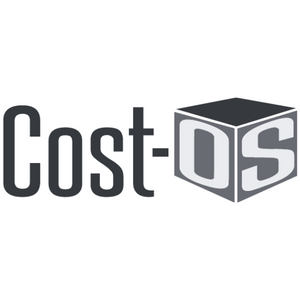Sustainable Construction: Strategies for a Greener Future

Sustainable construction involves designing, building, and maintaining structures with a minimal carbon footprint, benefiting society and the economy. As the construction industry is a major contributor to global carbon emissions, embracing sustainable practices has become essential to combat climate change.
For instance, The World Green Building Council reports that buildings are responsible for 39% of global energy-related carbon emissions, 28% of which are operational emissions and 11% are materials and construction.
Similarly, the United Nations Environment Programme (UNEP) says the buildings and construction sector accounts for approximately 37% of global greenhouse gas emissions. This includes emissions from both operational energy use and the production of building materials such as cement, steel, and aluminum.
These findings underscore the critical need for sustainable buildings and construction methods to mitigate the construction industry's environmental impact.
Understanding Preconstruction in Construction Projects
Preconstruction is the foundational phase in any construction project because it lays the groundwork for a successful build. It involves planning, budgeting, design development, and feasibility assessments. Preconstruction pros make crucial decisions regarding the project's scope, resources, and timeline, significantly impacting the construction process. Several key phases happen within preconstruction: design development, material selection, cost estimation, and scheduling. Each phase carefully considers the project’s environmental, economic, and social impact and long-term sustainability.
A primary focus of sustainable construction practices includes selecting materials that minimize the use of natural resources, evaluating lifecycle costs, and considering the overall impact on the built environment. By prioritizing green building strategies and sustainable construction techniques from the outset, preconstruction plays a pivotal role in ensuring the project’s success. It helps reduce unforeseen delays and costs, improve quality, and increase the likelihood of meeting sustainability goals. Effective preconstruction planning can significantly influence the project's time, cost, quality, and sustainability.
The Role of Sustainability in Preconstruction
Since sustainable construction projects aim to minimize environmental impact by reducing waste and CO₂ emissions, it’s easy to see why the preconstruction phase is pivotal in setting the foundation for sustainability. A study published in Engineering, Construction, and Architectural Management emphasizes the importance of early planning and decision-making in achieving sustainable outcomes.
Some of the ways preconstruction pros can achieve this are:
- Implementing sustainable design principles. This includes prioritizing energy efficiency, selecting eco-friendly materials, and planning for waste reduction. By integrating these principles early on, substantial reductions in resource consumption and environmental impact can be seen.
- Collaborating with stakeholders. Engaging with engineers, architects, and sustainability experts during preconstruction ensures that sustainable practices are embedded into the project, leading to more effective and innovative solutions.
- Adhering to sustainability standards and obtaining green certifications like LEED or BREEAM. These certifications often require specific sustainable practices and materials, guiding the project team in making decisions that align with recognized environmental standards.
Key Strategies for Sustainable Preconstruction
Knowing that sustainable preconstruction strategies are vital in ensuring long-term environmental benefits and resource conservation, let’s examine some of the most effective methods of achieving them.
Eco-friendly material selection. By using renewable or locally sourced materials, builders can minimize the environmental damage associated with construction.
Energy-efficient design. Integrating energy-efficient building systems, such as high-efficiency HVAC units or smart lighting, can significantly reduce a building's energy consumption over its lifecycle.
Waste reduction and management. Adopting strategies like modular construction or efficient design practices minimizes construction waste, leading to fewer resources being discarded and less impact on landfills. By focusing on resource-efficient techniques, builders can significantly reduce waste.
Optimizing site selection. Choosing a location that minimizes environmental impact, reduces transportation costs, and increases access to renewable energy resources ensures that the project has a more sustainable footprint.
Technological Advancements Supporting Sustainability in Preconstruction
Technological advancements are essential in driving sustainable development within the preconstruction phase. Some of these advancements are:
- Building Information Modeling (BIM). BIM helps architects and construction teams create detailed 3D models for a more efficient design process. This technology improves design accuracy and helps optimize resource usage, ultimately reducing material waste. By simulating different design scenarios, BIM enables teams to select the most resource-efficient solutions, leading to sustainable outcomes.
- 3D modeling and simulations. These tools are pivotal for visualizing and testing sustainability goals before construction begins. For example, energy simulations can help predict how a building will perform in terms of energy efficiency, allowing for early adjustments in the design to enhance sustainability.
- Estimating software. Tools like DESTINI Estimator provide invaluable insights into material quantities, costs, and timelines, allowing for better decision-making in terms of resource allocation. By offering real-time data on material usage and waste, DESTINI Estimator helps general contractors, architects, design teams, and owners make informed choices that align with sustainable goals. The software's ability to evaluate various construction options ensures that the most energy-efficient, resource-efficient, and cost-effective strategies are chosen during preconstruction. A bonus to using this software is that it integrates with model-based estimating and BIM. “Without that information, it’s just Legos,” says Matt Shehan, Benchmark Construction’s Vice President of Preconstruction Services.
Benefits of Sustainable Construction
Sustainable construction offers significant long-term advantages, such as:
- Cost savings. By implementing energy-efficient systems, reducing waste, and minimizing resource consumption, buildings experience lower operational costs over time. These savings are seen through reduced energy bills and less maintenance need.
- Environmental impact. By prioritizing green building practices, projects reduce carbon emissions, limit waste sent to landfills, and preserve natural resources. These long-term environmental benefits contribute to mitigating climate change and promoting ecological health.
- Reputation and marketability. As consumers and businesses increasingly prioritize eco-conscious choices, companies that invest in sustainable practices can attract environmentally aware clients and gain a competitive edge in the market.
- Regulatory compliance. Adhering to green building standards and environmental regulations avoids costly penalties and ensures that projects meet evolving sustainability requirements.
The Future of Sustainability in Construction
Sustainability is pivotal in shaping a more responsible built environment, with preconstruction as the key to its success. Professionals can reduce long-term environmental impacts by adopting sustainable practices in the early phases while promoting efficient resource use. As architect Norman Foster said, "The challenge is to create a built environment that minimizes its impact on the natural world."
To contribute to this vision, preconstruction professionals should embrace sustainable tools and technologies, like the DESTINI Estimator platform, which aids in making resource-efficient, cost-effective decisions. Integrating emerging technologies will continue to drive sustainability in preconstruction, offering even more opportunities to reduce environmental footprints and ensure a greener future.

-1.png?width=112&height=112&name=image%20(4)-1.png)














